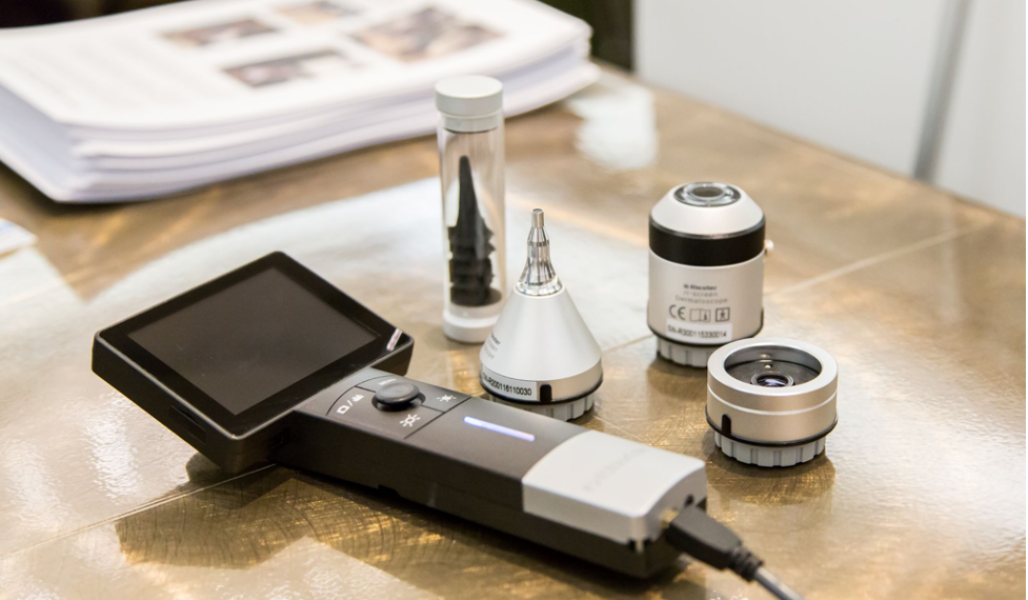Success Stories
Supporting Health Care at a Distance

Great Plains Telehealth Resource and Assistance Center promotes the advancement of telehealth across a six-state region through collaborative support and programs
The COVID-19 pandemic has brought great disruption to many aspects of daily life.
When the pandemic reached the U.S., the disruption was immediately felt in the health care industry. According to a study by the Commonwealth Fund, visits to ambulatory providers fell nearly 60 percent by early April 2020. Following the initial shelter-in-place orders in March, health care providers leaned into telehealth as a way to continue providing vital services for patients. For Jonathan Neufeld, PhD, program director for the Great Plains Telehealth Resource & Assistance Center (gpTRAC), the exponential growth represents the potential for telehealth services to make a positive impact in patient care.

Photo description: Jonathan Neufeld, PhD, program director of gpTRAC
Defining telehealth
According to Neufeld, the term telehealth is fairly fluid and is defined as any health care service provided at a distance. “In a practical sense it breaks down to health care in which I don’t have to physically be right next to a physician or other health care provider,” said Neufeld. “There are various types of asynchronous care—text messaging, image and video exchange usually mediated by a patient portal, and synchronous care—live visits using audio or video often run by various apps on a mobile phone, computer or tablet. There’s a broad range of applications within the broader term of telehealth.”
During the COVID-19 pandemic, the Centers for Medicare & Medicaid Services (CMS) issued an unprecedented set of emergency temporary regulatory waivers and rules to allow for reimbursement for telehealth services. “CMS sets the tone on covering telehealth,” said Neufeld. “Ultimately, Congress will need to change the law for long-term reimbursement for telehealth services. What remains to be seen is how telehealth reimbursement will play out with the trend towards quality-based payment from payers. In addition, providers need reimbursement from commercial payers as well to sustain growth.”
Exponential growth in a matter of weeks
“Early on in the pandemic, the National Health Service in the UK said that telehealth made 10 years of progress in a month,” said Neufeld. “It was not an exaggeration and we saw the same type of growth here in the Midwest and across the United States.”
In his role, Neufeld directs efforts by gpTRAC to help health care providers develop and implement telehealth programs. Through funding from the Office for the Advancement of Telehealth, an agency within the Federal Office of Rural Health Policy, gpTRAC promotes telehealth training, technical assistance and consultation, and outreach activities in the states of Minnesota, Iowa, North Dakota, South Dakota, Wisconsin, and Nebraska.

Photo description: Telehealth equipment on display at gpTRAC’s annual conference
Part of the National Consortium of Telehealth Resource Centers
As one of 14 federal-funded telehealth resource centers across the country that make up the National Consortium of Telehealth Resource Centers, gpTRAC is committed to expanding telehealth programs for rural and underserved communities and helping telehealth meet its full potential. “We are part of an impressive group committed to this mission,” said Neufeld. “We are here to respond to challenges and to support telehealth growth.”
Housed in the University of Minnesota’s Institute for Health Informatics, part of the Office of Academic Clinical Affairs, gpTRAC’s impact extends across the six-state region and within the University through projects with the Community-University Health Care Center and the Mobile Health Initiative. By providing services close to home for communities in need, telehealth has great potential as one tool to address health care disparities and resulting poor health outcomes.
Working with safety net providers is a top priority for gpTRAC. This work includes providing training and resources as needed to bring gpTRAC’s expertise in technology, workflows, billing and policy to health care providers across the region. One major advantage for the six-state region served by gpTRAC is its infrastructure. “Five of the top six states in the country for Medicare telehealth services are in the Midwest including Minnesota, South Dakota, North Dakota, Nebraska and Iowa,” said Neufeld. “This energy and funding being put into telehealth services is a happy confluence of a number of things—our geography, forward-thinking health care systems and philanthropic support to name a few.”
One of the most interesting aspects of telehealth is its embrace by the health care consumer as an acceptable, and sometimes even preferred, way to receive care. Is there a population group that telehealth does not work for? Neufeld believes the answer is no. “No groups are inherently disqualified from accepting and benefiting from telehealth care options,” said Neufeld. In the pandemic, gpTRAC has confirmed that all age ranges, including the elderly, will embrace telehealth services as a substitute for some services when in-person care isn’t a necessity. “We learn these skills when we need them and the cultural component—from the provider side and the patient side—was in question until recently. The research for years has been telling us that patients like it more than providers. We’ve now had a chance to push ourselves to discover what is possible through telehealth.”
More information
Telehealth involves more than technology. To determine if a healthcare organization is ready to expand its telehealth services, begin with these elements:
- Understand who is championing the effort
- Determine why your organization wants to provide telehealth services
- Conduct a wide assessment of your organization
- Decide if your organization will receive services, provide services, or both. Learn more at gptrac.org/resources.
To learn more about gpTRAC’s services and resources, visit gptrac.org.
